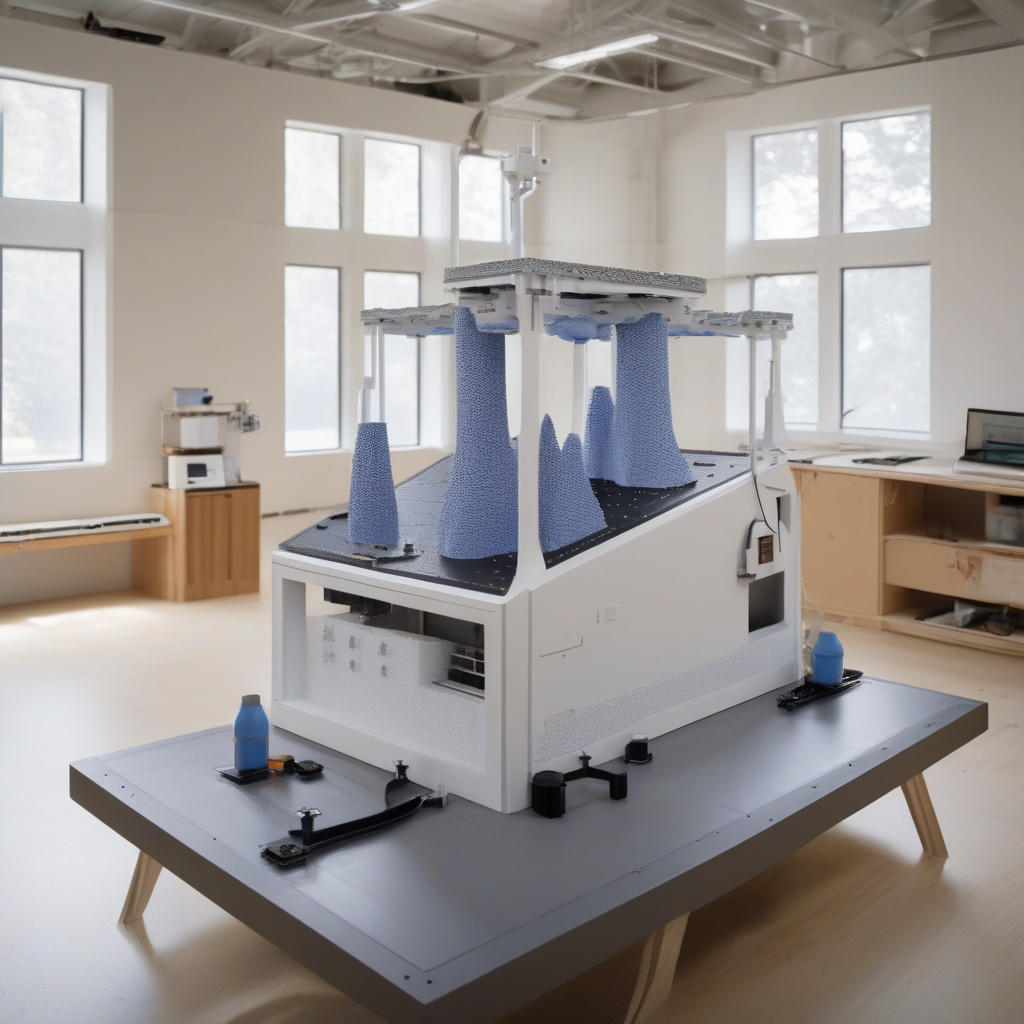World’s First: Giant Shaking Table Tests if 3D-Printed Homes Can Survive Earthquakes
With the popularity of 3D-printed homes rising, University of Bristol scientists are using the UK’s largest earthquake simulator to test the resilience of these innovative structures. This groundbreaking research aims to revolutionize the construction industry by ensuring that 3D-printed homes can withstand the forces of nature, particularly earthquakes.
The giant shaking table, located at the University of Bristol’s Earthquake and Geotechnical Engineering Laboratory, is a marvel in itself. Measuring 3 meters by 3 meters, this impressive piece of technology can replicate the exact movements of an earthquake, providing researchers with valuable data on how different building materials and designs react under stress.
Dr. Anastasios Sextos, an expert in earthquake engineering at the University of Bristol, leads this pioneering project. He and his team are subjecting 3D-printed models to various earthquake scenarios to assess their performance. By analyzing the structural integrity and behavior of these models, researchers can identify potential weaknesses and implement improvements to enhance their resilience.
One of the key advantages of 3D-printed homes is their ability to be customized quickly and cost-effectively. However, concerns about their durability in the face of natural disasters have raised doubts about their widespread adoption. The results of these shaking table tests will provide crucial insights into how 3D-printed homes can be reinforced to meet safety standards and building codes.
The implications of this research extend beyond earthquake-prone regions. As climate change continues to impact the frequency and intensity of natural disasters worldwide, resilient infrastructure is becoming increasingly essential. By proving that 3D-printed homes can withstand earthquakes, this study could pave the way for a more sustainable and disaster-resilient future.
Moreover, the use of 3D printing technology in construction has the potential to address housing shortages, reduce construction waste, and accelerate the building process. If these homes prove to be resilient to earthquakes, it could revolutionize the way we think about housing design and construction, ushering in a new era of innovation and sustainability.
As the world faces the challenges of rapid urbanization, climate change, and housing affordability, the need for resilient and efficient construction methods has never been more pressing. The research being conducted at the University of Bristol represents a significant step towards realizing the full potential of 3D-printed homes and ensuring their viability in the face of natural disasters.
In conclusion, the world’s first giant shaking table tests on 3D-printed homes at the University of Bristol are pushing the boundaries of innovation and engineering. By subjecting these structures to simulated earthquakes, researchers are not only evaluating their resilience but also opening up new possibilities for sustainable and disaster-resistant construction methods. As the demand for affordable and durable housing continues to grow, the outcomes of this research could have far-reaching implications for the future of the construction industry.
#3DPrinting, #EarthquakeResilience, #ConstructionInnovation, #SustainableHousing, #DisasterPreparedness












